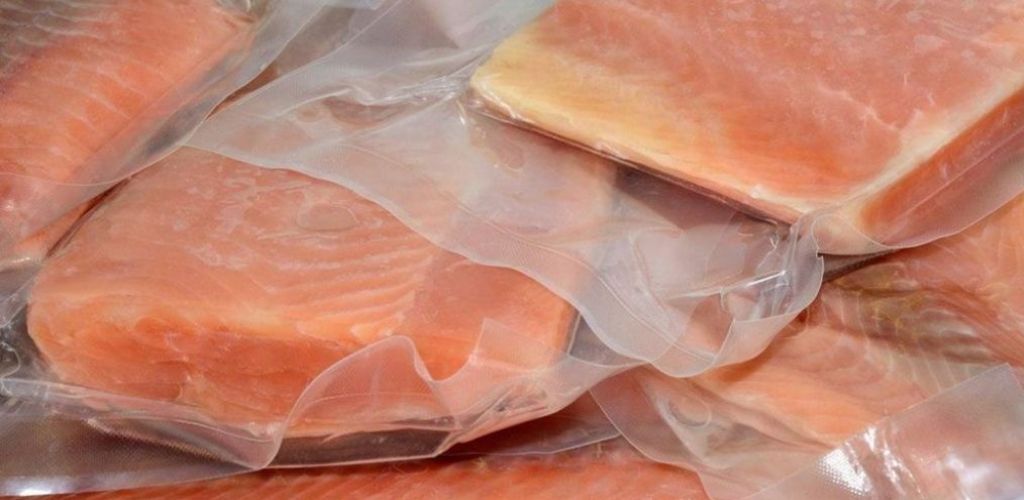Never thaw frozen fish in vacuum-sealed packaging. Here’s why
When visiting the store, it’s easy to choose individually wrapped frozen fish. There’s much to like about the packaging. They are easy to store and prepare. Cooking also is a breeze too since everything is pre-cut and portioned out.
The vacuum-sealed packaging, also known as Reduced Oxygen Packaging (ROP), prevents water loss and the fish from drying out. It’s designed to minimize odors and thus extend shelf life. But what if there was more than what meets the eye?
Advertisement
Like Cooking Tips for more
Shutterstock
It turns out that there’s a potential health risk with these individually wrapped frozen fish. This health risk is known as botulism.
What is botulism?
Shutterstock
The CDC defines botulism as a “rare but serious illness caused by a toxin that attacks the body’s nerves.” Symptoms initially involve weakened muscles. However it can lead to difficulty breathing and even death. Botulism is most commonly associated with canned goods, but the risk also presents itself with vacuum-sealed packaging.
Why does this happen?
Shutterstock
Clostridium botulinum is an anaerobic bacteria. It produces spores that grow in warmer, low-oxygen conditions. These spores then can release the toxin which results in botulism. In other words, when you remove the frozen package from the freezer and the temperature rises, the risk of this happening increases rapidly.
How do you prevent this from happening?
Luckily, there are a series of simple tips to prevent this from happening.
1. Properly store frozen fish
Shutterstock
Make sure you freeze the individual packets of vacuum-sealed fish at the right temperature. The risk of botulism increases dramatically at temperatures above 38°F. Many home refrigerators do have temperatures above 38°F, so you’ll want to be sure you to check yours.
2. Remove the fish from packaging before thawing
Shutterstock
Why is removing the fish so important? Remember, the vacuum-sealed packaging eliminates oxygen. You want to expose frozen fish to oxygen to prevent the spores from producing toxins in the first place.
3. Follow thawing guidelines provided by seller
Shutterstock
As always, follow the thawing recommendations provided by the seller. By itself, vacuum-sealed fish is not a shelf stable or commercially stable product, meaning it requires refrigeration.
Best ways to buy, store, or thaw frozen fish
1. Check the packaging before buying
Shutterstock
Before making a purchase, it’s important to ensure you are not buying frozen fish that has already gone bad. Do not purchase packages that might have been torn or open. Look closely and avoid ones that have signs of frost or ice crystals. Double check the texture of the fish itself. It should be rock hard.
2. Store it properly
Shutterstock
Be sure to store in a freezer below 38°F. Use a thermometer to double check.
3. Thaw it gradually
Like Cooking Tips for more
Shutterstock
Advertisement
Remove fish from any packaging and ideally thaw gradually overnight afterwards. Avoid cross-contamination by making sure frozen fish isn’t mixed with fresh produce.
